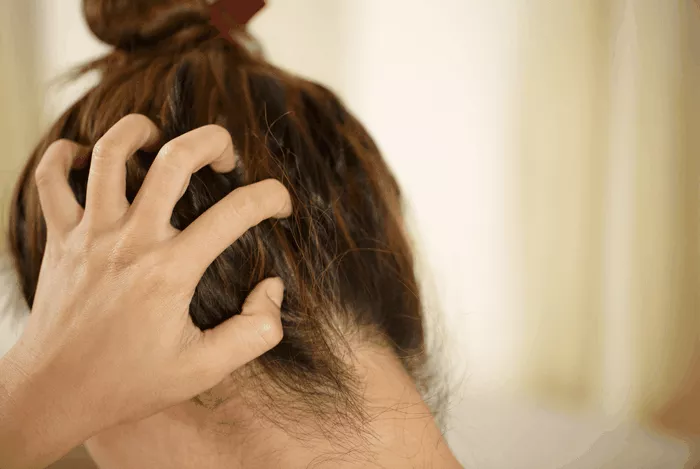If you’re constantly battling dry, frizzy, or brittle hair, you’re not alone. As a hairstylist, I hear this concern daily. Dry hair isn’t just annoying—it can lead to breakage, split ends, and a dull appearance. But why does it happen? The answer isn’t always simple. Dry hair can stem from external factors (like weather or styling habits) or internal factors (like diet or health).
Let’s break down the causes, one by one, and learn how to restore your hair’s natural shine and softness.
Understanding Hair Structure: The Root of the Problem
To fix dry hair, you must first understand how hair works.
The 3 Layers of Hair
Cuticle: The outermost layer, made of tiny, overlapping scales (like roof shingles). It protects the inner layers and locks in moisture.
Cortex: The middle layer, containing proteins (keratin) and moisture. It gives hair strength and elasticity.
Medulla: The innermost layer (not always present in fine hair).
Why It Matters: When the cuticle is damaged, moisture escapes from the cortex, leaving hair dry.
Natural Oils (Sebum):
Your scalp produces sebum, a natural oil that coats hair to keep it hydrated. If sebum can’t travel down the hair shaft (due to damage or texture), hair dries out.
Environmental Factors: The Silent Culprits
External elements play a huge role in drying out hair.
Sun Exposure
UV rays break down keratin proteins and fade protective lipids.
Result: Brittle, porous hair that loses moisture quickly.
Wind
Wind tangles hair, causing friction that lifts the cuticle.
Tip: Wear a loose braid or silk scarf on windy days.
Cold, Dry Air
Winter air sucks moisture from hair. Indoor heating worsens this.
Fix: Use a humidifier at home.
Chlorine & Saltwater
Chlorine (in pools) and salt (in oceans) strip natural oils.
Prevention: Rinse hair with clean water before swimming.
Hair Care Mistakes: Are You Sabotaging Your Hair?
Many daily habits unknowingly damage hair.
Over-Washing
Shampooing too often strips sebum.
Rule: Wash oily scalps every 2–3 days; dry scalps every 4–5 days.
Harsh Shampoos
Sulfates (e.g., SLS) create lather but remove too much oil.
Switch to: Sulfate-free shampoos with moisturizing ingredients (e.g., aloe, glycerin).
Hot Water
Hot showers open the cuticle, letting moisture escape.
Solution: Rinse hair with cool water to seal the cuticle.
Heat Styling
Blow dryers, straighteners, and curling irons dehydrate hair.
Tip: Always use a heat protectant spray (look for silicones or polymers).
Chemical Treatments
Bleaching, coloring, or perming breaks down the cuticle.
Advice: Space out treatments and use bond-repair products (e.g., Olaplex).
Rough Towel Drying
Rubbing hair with a towel creates friction, damaging the cuticle.
Better Option: Use a microfiber towel or cotton T-shirt to blot gently.
Health & Diet: What’s Happening Inside Your Body
Healthy hair starts from within.
Dehydration
Not drinking enough water dries out hair (and skin!).
Goal: Drink 8–10 glasses daily.
Nutrient Deficiencies
Protein: Hair is made of keratin. Eat eggs, fish, or lentils.
Vitamins:
- Vitamin A: Supports sebum production (try sweet potatoes).
- Vitamin D: Boosts follicle health (sunlight or supplements).
- Vitamin E: Protects from oxidative damage (almonds, spinach).
Minerals:
- Iron: Carries oxygen to hair follicles (red meat, beans).
- Zinc: Repairs tissue (pumpkin seeds, oysters).
Hormonal Imbalances
Thyroid issues, menopause, or PCOS can reduce sebum production.
Action: Consult a doctor if dryness comes with fatigue or weight changes.
Stress
Stress hormones (cortisol) disrupt hair growth cycles and oil production.
Relief: Try yoga, meditation, or deep breathing.
Aging
Scalp produces less sebum as you age.
Fix: Use richer conditioners and scalp oils (e.g., argan oil).
Water Quality: The Hidden Enemy
Hard water (high in minerals like calcium) leaves deposits on hair, blocking moisture.
Signs of Hard Water
Hair feels sticky, looks dull, or turns brassy.
Test: Fill a bottle with water + 10 drops of soap. Shake. If it’s cloudy, you have hard water.
Solutions
- Install a showerhead filter.
- Use a clarifying shampoo once a week.
Hair Type & Texture: Why One Size Doesn’t Fit All
Your natural texture affects dryness.
Curly or Coily Hair
Oils struggle to travel down twists and curls.
Routine: Use leave-in conditioners and the “LOC method” (Liquid, Oil, Cream).
High Porosity Hair
Porous hair absorbs moisture quickly but loses it faster.
Fix: Seal with butters (shea) or oils (jojoba) after conditioning.
Fine or Straight Hair
Oily roots but dry ends? Avoid heavy products near the scalp.
Conclusion
Dry hair is a fixable problem once you identify the cause. Protect your hair from environmental damage, adjust your hair care routine, nourish your body, and embrace products tailored to your hair type. With patience and the right steps, you’ll see softer, healthier hair in no time.
Related topics:
How to Take Care of Dry Hair in Summer?
How Long Does It Take to Repair Dry Hair?
How Long Does It Take to Repair Dry and


